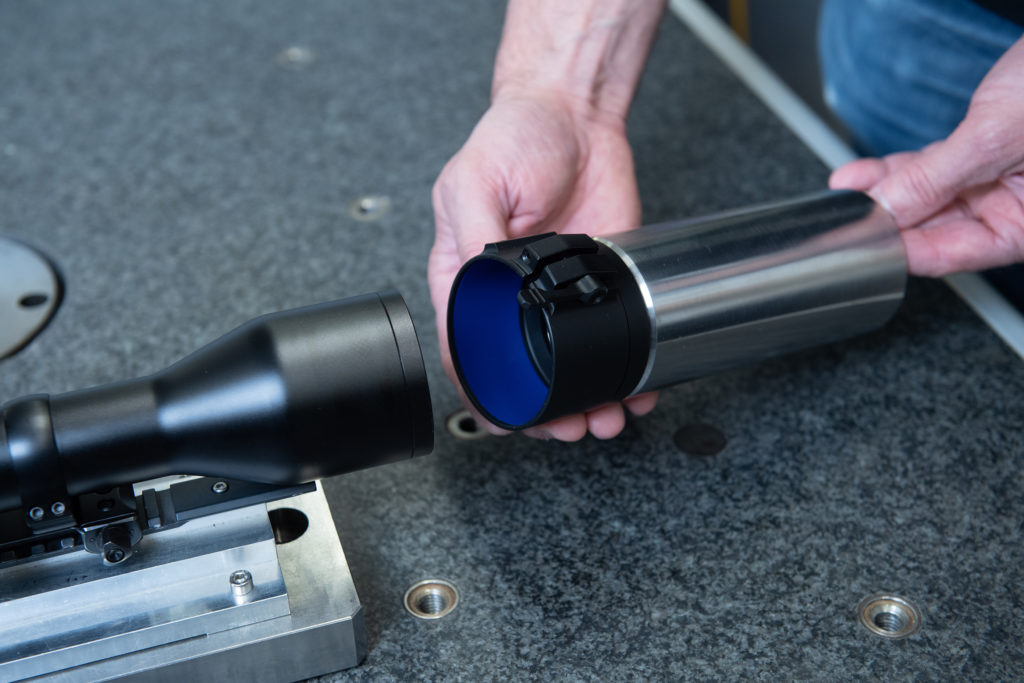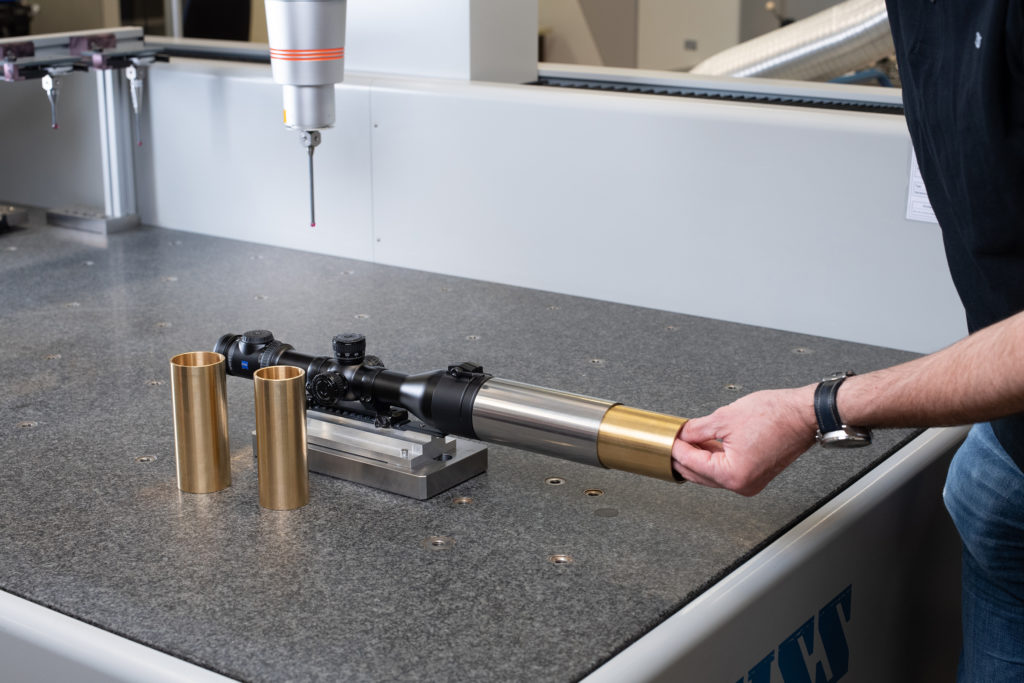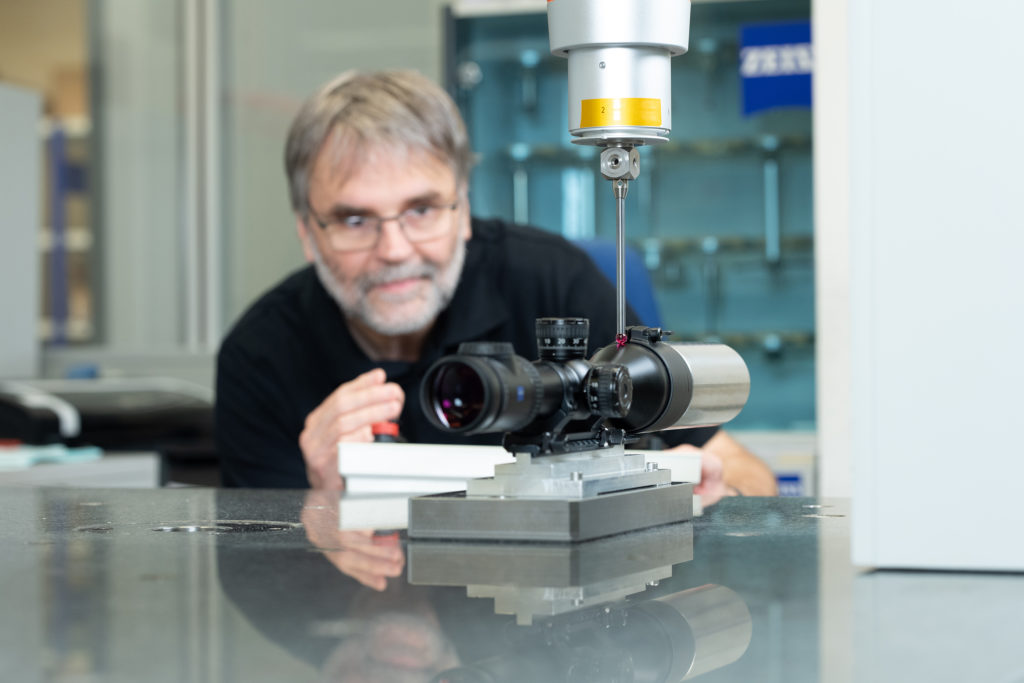Four Questions for Klaus Felgenhauer, Master of Engineering and Head of the ZEISS Training Academy, on the Use of Clip-On Attachments in Hunting
The use of attachments for hunting is currently a hot topic. Due to changes in the current legal situation and increasing wild boar populations in combination with African Swine Fever (ASF) and in some cases massive financial burdens due to game damage, their advantages are currently the subject of much debate among hunters and their use in hunting is increasingly becoming possible.
ZEISS has thoroughly tested the suitability of ZEISS riflescopes for use with attachments in its own in-house laboratory. The results of the studies confirm that the entire ZEISS range is ideally suited for use with attachments. In summary, the ZEISS Victory V8, ZEISS Victory HT, ZEISS Conquest V6, and ZEISS Conquest V4 all demonstrated the expected and necessary degree of stiffness as well as maximum reliability in terms of shooting stability in the various test setups. In short, the ZEISS product range delivers the stability required for the attachment optics available on the market! Read more about the tests here.
We spoke with Klaus Felgenhauer, Master of Engineering and head of the ZEISS Training Academy, about the use of attachments in hunting.
Question: Attachments for hunting are the subject of much debate. ZEISS is now testing the suitability of its riflescopes for use with these products. What are the advantages of attachments?
Klaus Felgenhauer: The debate that is being held today on thermal imaging attachments are very similar to the debates that were held when our illuminated reticles were introduced 30 years ago. Today there is barely a hunter alive that would go on a hunt without an illuminated reticle, precisely because it increases our ability to hunt in line with the hunter’s code of ethics and helps us keep the game from suffering. I take the same view when it comes to attachments. Used responsibly, in the case of thermal imaging cameras, they make it possible to reliably identify a target, get a shot off cleanly, and bring it down without any residual light. As a result of permanently increasing wild boar populations, greater damage caused by game, and the increasing risk of ASF, we have to hunt wild boar more intensively, and attachments simply extend the times when this is possible in line with the hunter’s code of ethics.
ZEISS carried out extensive laboratory testing regarding the use of clip-on attachments for riflescopes. Did you also test them in the field?
Felgenhauer: In order to provide the best equipment we at ZEISS attach great importance to extensive testing of our products.,Because the highest level of product safety is our most paramount objective. For this reason, in addition to laboratory tests, field tests are always part of the obligatory approval process for new products – or, as in this case, the suitability of ZEISS riflescopes in use with clip-on attachments. We take our claim “Confidence in toughest conditions” very seriously. The test took place during a clear but cold winter day at a shooting-range in Austria with temperatures all day below 0°Celsius. From the early morning hours until early afternoon, we have thoroughly tested all ZEISS riflescopes with clip-on attachments at the distance of 100 meters and with about 200 shots. We shot with an Anschütz 1782D in caliber .30-06 Springf. in various riflescope combinations. For the best comparison of the riflescope’s point of impact performance with and without the clip-ons, the same RWS EVO in 180 grain / 11.9 grams ammunition was used throughout. The results showed perfectly placed shots and verified the stability and reliable performance of our riflescopes despite the added weight.
What needs to be considered when using attachments?
Felgenhauer: Even with properly precalibrated attachments, the point of impact can change. This means that in addition to the riflescope, the attachment itself also needs to be zeroed from time to time. With thermal imaging devices, a heat pad is required for this purpose. Outdoors, however, a small piece of aluminum foil attached to a target with double-sided tape often works just as well. It is important that the attachment is mounted to the riflescope with the torque specified by the adapter manufacturer. Otherwise, you run the risk of damaging the riflescope if you apply too much torque and of the attachment slipping off the riflescope when shooting if you apply to little.
When do I need a thermal imaging camera or night vision device and when do I need a clip-on attachment? What are the respective advantages of each?
Felgenhauer: If I want to “find” game, I need an observation device with the largest possible field of view and excellent resolution, such as the ZEISS DTI 3/35 thermal imaging camera. If I then want to take my target down, even in the most unfavorable lighting conditions such as when there is no longer any light available, then I need an attachment. The technology that I choose is a completely different question. This is certainly also dependent on personal preferences or requirements. Residual light amplifiers produce monochrome but high-resolution images that correspond to “normal” vision. These are very good for estimating distances and the size of a target and also evaluating the terrain in front of and behind the target – can I take a safe, accurate shot? You can also easily spot the points of a buck, for example. This looks completely different with thermal imaging. The “cold” points of the antlers are not visible and also the appearance of the terrain is very unusual. You “only” see differences in temperature or differences in thermal radiation intensity. This takes some getting used to. But it is absolutely fascinating how clearly and distinctly you can see not only the brook shining in the absolute darkness but also the tiniest newborns in the grass. This isn’t possible with residual light amplifiers. With them, you can only see reflected light. This means there needs to be at least some residual light still available.


